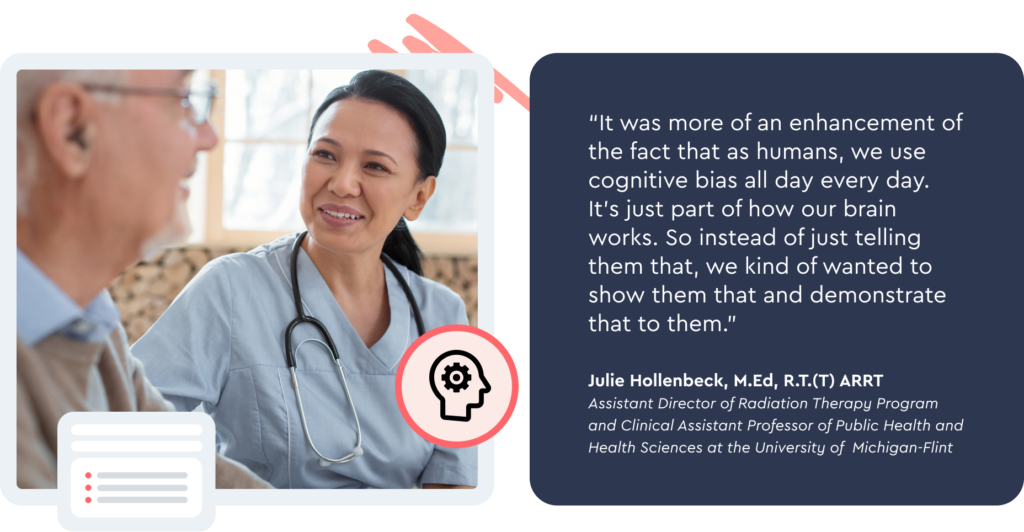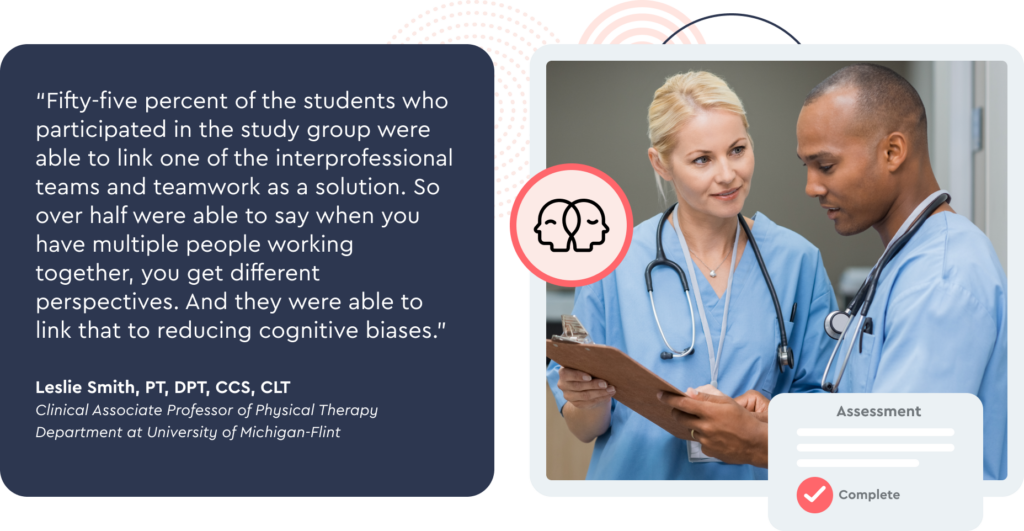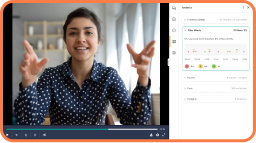Quick thinking and fast decision-making are requirements for any good nurse. Like driving a car at high speed, fast-paced judgment can be dangerous and can lead to reckless accidents in the clinical setting. Human brains process about 40 bits of information, but most of us are hit with 11 billion bits of information at any given moment. Our brains tend to create shortcuts to close the gap between information received and processing ability. But these cognitive shortcuts, also known as cognitive biases, can lead to errors. In healthcare, cognitive biases can lead to misdiagnosis, disparate treatment, and even death. According to one study, cognitive bias was responsible for about 30% of medical errors.
What Is Cognitive Bias?
In a clinical setting, cognitive biases are flaws in judgment that may have a negative impact on clinical reasoning skills. Cognitive biases emerge from one’s beliefs, emotions, experiences, and environment. And while they result from the fast processing our brains do every single day, biases create barriers to smart decision-making because they are based on perceptions and observations rather than facts.
“We all know that all of us have biases, conscious and unconscious biases. And some of those can lead us to making the wrong decisions,” said Dr. Carman L. Turkelson, Associate Professor of Nursing and Director of the University of Michigan School of Nursing Simulation Center.
Nurses can play an important role in recognizing and addressing this type of bias and facilitating a strong patient experience and equitable, quality care. The foundation of this awareness and understanding begins as they are students.
One of the ways we can minimize bias begins with awareness. Understanding that biases exist, even unconsciously, can create an awareness. With the role nurses play within healthcare teams, it’s critical that they identify biases that may exist in others and acknowledge how this can risk quality and equitable care.
Common Types of Cognitive Bias in Clinical Practice
More than 100 cognitive biases exist, but some are more common in clinical settings.
- Confirmation bias—selectively including evidence that aligns with personal beliefs and expectations while purposely ignoring contrary evidence.
For example, sticking with an initial diagnosis when lab results indicate something different.
- Anchoring bias—prioritizing information and data that supports initial impressions.
For example, a patient with chronic sciatica comes into the ER with extreme back pain and the default diagnosis is sciatica flareup without exploring other possible causes.
- Authority bias—opting to give greater preference to opinions from an expert in the room.
For example, not questioning a senior physician’s discharge orders for an elderly patient who cannot manage their own care.
A Lesson in Bias Discovery
Nursing leaders from the University of Michigan-Flint created a cross-departmental simulation activity (SIM-IPE) to help students recognize different types of cognitive biases and understand how they impact patient errors.
The lesson involved pre-simulation learning to understand cognitive bias and other health disciplines incorporated into the activity. The simulation activity was then followed by individual and group reflection, where students identified errors as well as biases.

“It was more of an enhancement of the fact that as humans, we use cognitive bias all day every day. It’s just part of how our brain works. So instead of just telling them that, we kind of wanted to show them that and demonstrate that to them.” Julie Hollenbeck, M.Ed, R.T.(T) ARRT, Assistant Director of Radiation Therapy Program and Clinical Assistant Professor of Public Health and Health Sciences at the University of Michigan-Flint.
You can get the full lesson details in this video, or you can view the slides.
4 Ways To Minimize Cognitive Bias
- More than anything else, understanding and acknowledging that biases exist is the first and likely most important step to reducing cognitive biases. This starts in the classroom with deliberate discussion and activities, like the one above, to increase awareness of the types and presence of biases.
- The second step involves practice and reflection. Students must find themselves in practice situations similar to the clinical environment with pressures, distractions, and multiple team members. This experience can replicate real-life scenarios, where fast decision-making can often carry cognitive biases. When this simulation is coupled with a reflection activity, students can identify how cognitive biases play a role in diagnosis and care and consider alternative actions and approaches that challenge the biases.
- The third way to reduce cognitive biases is to pump the brakes. Slowing down and taking time to carefully think through information and decisions can reduce the negative impact these biases have on our thinking.
- Finally, as the University of Michigan-Flint students discovered, collaborating and building partnerships that rely on diverse experiences and perspectives to factor into decision-making helps mitigate cognitive biases in healthcare.
“Fifty-five percent of the students who participated in the study group were able to link one of the interprofessional teams and teamwork as a solution. So over half were able to say when you have multiple people working together, you get different perspectives. And they were able to link that to reducing cognitive biases,” said Leslie Smith, PT, DPT, CCS, CLT, Clinical Associate Professor of Physical Therapy Department at University of Michigan-Flint.

Conclusion
Most cognitive biases are unconscious biases, and most of us don’t recognize them. But recognizing biases in ourselves and others can lead to better decision making, create a safer environment, and ultimately save lives.
Video is a tool that supports simulation and can be an effective way to create clinical-like environments to help students experience, recognize, and reflect on how cognitive biases impact decision-making. Let us show you how GoReact can help.








